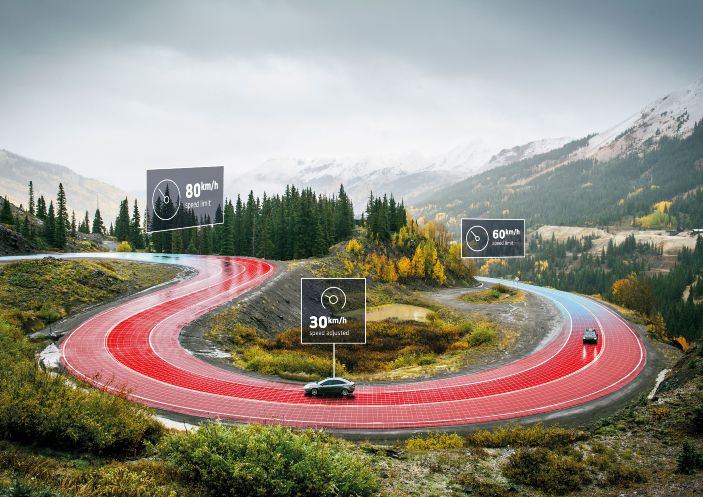TomTom has announced the launch of a brand-new advanced driver assistance system (ADAS) called TomTom Virtual Horizon. This map-based, all-in-one ADAS software helps passenger and commercial vehicles anticipate the road ahead. The software provides a seamless connection between digital maps and ADAS functionality, enabling vehicles to see beyond the range of their sensors, for a smoother and safer drive.
The TomTom Virtual Horizon is designed to democratise ADAS by supporting vehicles without embedded navigation, as well as the most technologically advanced automated vehicles. The software translates highly attributed map data into actionable information for drivers and vehicles alike. For example, if there is a sharp bend in the road or a change in the speed limit ahead, TomTom Virtual Horizon will warn drivers in non-automated vehicles to prepare to take action, while the software in automated vehicles will enable more informed and intelligent decision making without the involvement of the driver.
“While TomTom continues to join forces with automakers to develop next-generation technologies like self-driving cars, we are most proud when we bring to market affordable advanced technologies that will make driving safer and easier for everyone, not just the select few,” says Antoine Saucier, managing director, TomTom Automotive. “TomTom Virtual Horizon will bring actionable information about the road ahead, way beyond the vision of drivers and vehicle sensors, that will improve road safety around the world.”
TomTom Virtual Horizon offers automakers an all-in-one solution that includes precise positioning, intelligent route prediction, and a horizon provider compliant with industry-standard protocols. The new software is built on TomTom’s trusted ADAS map, which powers millions of automated vehicles around the world. The solution supports all the TomTom ADAS Map’s road attributes including speed limits, traffic signs, gradient, curvature, lane information and traffic lights. TomTom Virtual Horizon and the TomTom ADAS Map combine to provide an all-in-one advanced driver assistance systems solution. Use cases for the technology include predictive powertrain control to minimize emissions, as well as improved battery management for hybrid and electric vehicles.

EU ISA compliance challenge
The new software will make it easy for automakers to comply with upcoming Intelligent Speed Assistance (ISA) regulations, including the legislation adopted by the European Commission for the EU that comes into effect as of July 2022.
ISA systems prompt and encourage drivers to slow down when they exceed the speed limit. The legislation, adopted by the European Commission (EC) at the end of May this year, mandates all new passenger and commercial vehicle models sold in the European Union (EU) to be equipped with an ISA system by July 2022 to pass type approval. By July 2024, all new passenger and commercial vehicles sold in the EU will be required to be equipped with ISA. Similar ISA legislation is being considered in Israel, Iceland, Norway, Switzerland and the UK.
The new safety requirements follow research showing that technical solutions assisting drivers in reducing driving speed have a profound impact on accident outcome and reduction of injury levels.
According to the EC-delegated regulation, all systems will require highly accurate explicit and implicit speed limit sign information across the EU. As noted by the EC, “systems employing a combination of a camera system, global navigation satellite system (GNSS) and up-to-date digital maps are considered the state of the art systems with the greatest real-world performance and reliability.”
“To be compliant with ISA requirements, automakers need fresh and accurate map data delivered to the ISA function in an easy-to-integrate manner,” says Antoine Saucier, managing director, TomTom Automotive. “TomTom offers automakers a one-stop ISA shop with TomTom Virtual Horizon – a complete and cost-effective map-based solution with the most accurate speed limit data. TomTom Virtual Horizon will make it easy for automakers to meet any new ISA requirements, but most importantly, it will help to make roads safer.”





